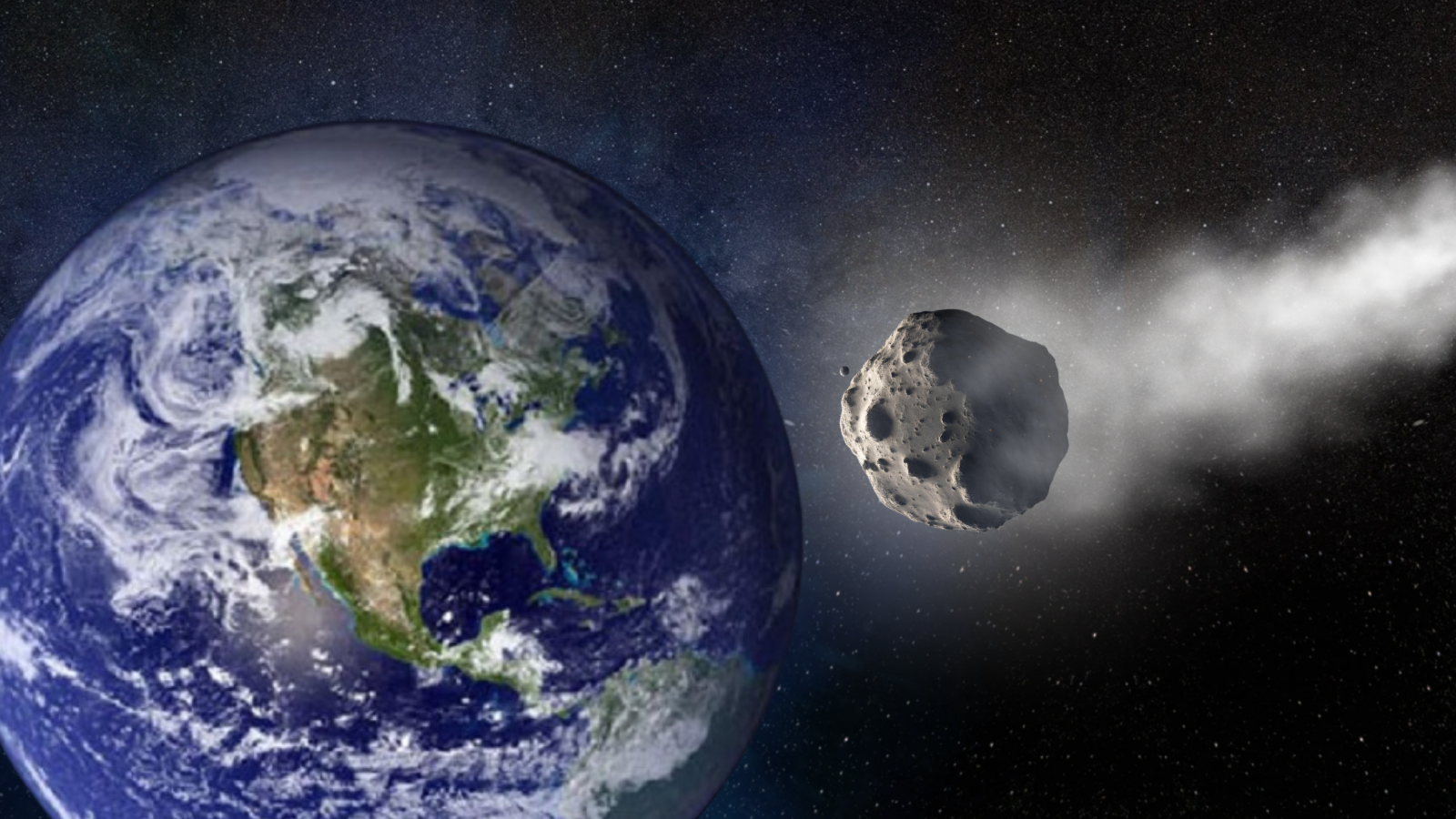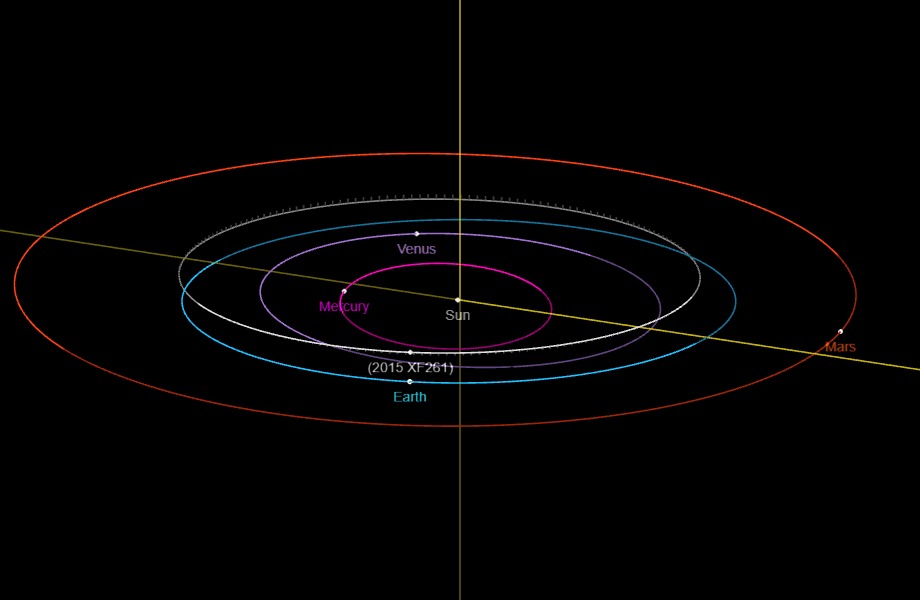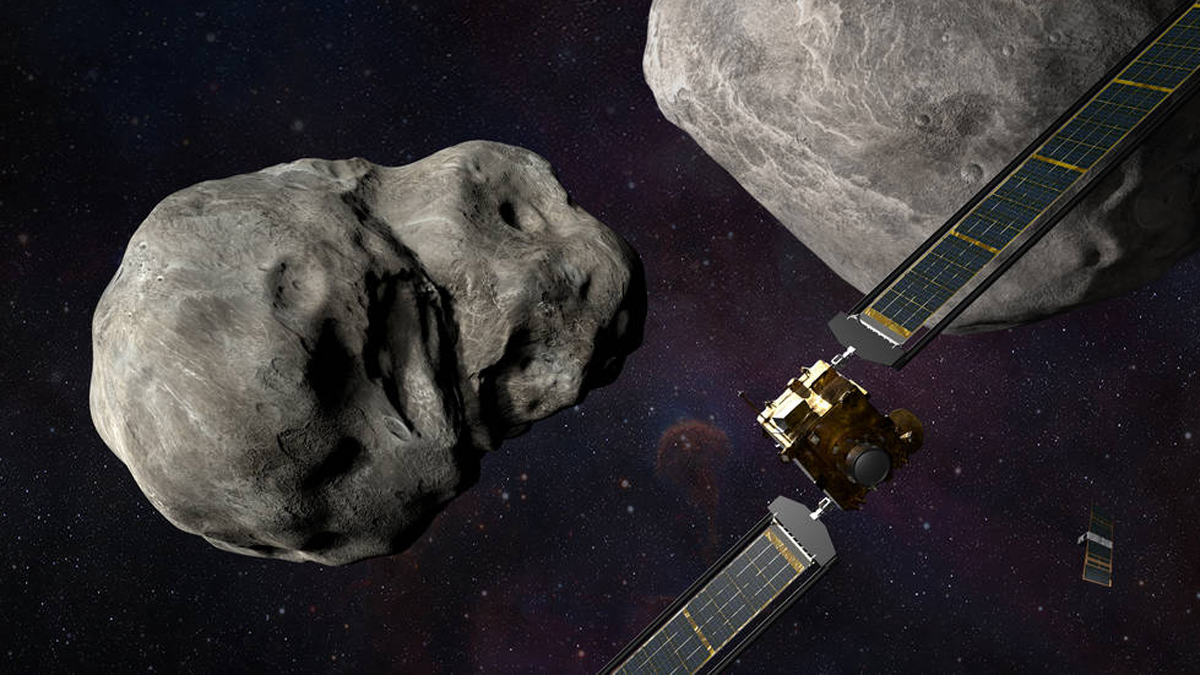China plans to deflect an asteroid by 2030 to showcase Earth protection skills
The mission's apparent target asteroid zoomed past Earth just this week.

China is planning its first mission to impact an asteroid in the name of planetary defense. The mission will serve a dual purpose: One craft will impact the asteroid while its partner observes the space rock to learn more about the solar system and its formation.
The China National Space Administration (CNSA) mission may have already selected its target — the near-Earth object (NEO) 2015 XF261, a nearly 100-foot-wide (30 meters) asteroid.
According to the small-body database managed by NASA's Jet Propulsion Laboratory (JPL), 2015 XF261 last came relatively close to Earth just this week, on Tuesday (July 9), when it passed within 31 million miles (50 million kilometers) of our planet. The space rock was traveling at around 26,000 mph (42,000 kph), roughly 30 times faster than the speed of sound.
The nonprofit Planetary Society reported that this is the latest development in asteroid impact mission planning for China, a country that has recently become increasingly interested in planetary defense.
Related: 2 asteroids just zipped by Earth, and NASA caught footage of the action
The Planetary Society pointed to a recent paper in the Journal of Deep Space Exploration that discussed the proposed 2015 XF261-targeting mission.
"For China's first near-Earth asteroid defense on-orbit verification mission, a defensive disposal demonstration will be carried out on the potential risk of near-Earth asteroids impacting the Earth," the study states.
Get the Space.com Newsletter
Breaking space news, the latest updates on rocket launches, skywatching events and more!
"The scientific objectives of the on-orbit verification of asteroid defense and its specific scientific exploration mission will be designed and proposed," it adds. "A scientific payload demand analysis will be carried out, and payload configuration plans and exploration mission requirements will be proposed to provide a decision-making basis for the future implementation of asteroid defense missions."

Following the imapct of DART
The planned mission follows in the footsteps of a groundbreaking NASA planetary defense mission, the Double Asteroid Redirection Test (DART), which in September 2022 impacted the smaller body in the Didymos binary asteroid system.
The impact of the 1,260-pound (570 kilograms) DART spacecraft on the moonlet Dimorphos, which orbits a larger 2,560-foot (780 m) asteroid called Didymos, at 14,000 mph (22,500 kph) was deemed a success. The impact shifted the orbit of the two asteroids and demonstrated that, with enough lead time, a kinetic impactor could divert a smaller asteroid from an impending collision with Earth.
In October 2024, the European Space Agency (ESA) will launch the Hera spacecraft to the Didymos system to further assess the impact of the DART mission. Hera is expected to rendezvous with Dimorphos and Didymos in 2026.

China's two-spacecraft 2015 XF261 mission will combine the work of DART and Hera, impacting the NEO and observing its target for between six months and a year after the collision.
Asteroids like 2015 XF261 are thought to have been created from material left over after the formation of the planets around 4.6 billion years ago. As such, they offer the opportunity to study "unspoiled" material that was the building blocks of the solar system's worlds, including Earth.

The CNSA mission is expected to launch before 2030, and the final choice of its NEO target will depend on its launch schedule. In April 2024, SINA Technology reported that Wu Weiren, director of China’s Deep Space Exploration Laboratory (DSEL), set a more firm date for the mission's launch, stating it would blast off in or around 2027.
2015 XF261 is set to pass Earth in March and May 2027, but the asteroid will still be 20 million miles (32 million km) from our planet at the time, and the CNSA will need time to reach it. DART hit Dimorphos when its system was just 7 million miles from Earth, and that journey took 10 months to complete.
The CNSA could get another shot at punching 2015 XF261 in April 2028, when the asteroid will be around 13 million miles (21 million km) away. But the best opportunity for such a mission seems to come in April 2029, when the asteroid will come to within 4.2 million miles (6.8 million km) of Earth. Another good chance will come in April 2030, when 2015 XF261 approaches Earth within around 4.4 million miles (7.1 million km).
This isn't the first asteroid impact mission proposed by CNSA. In 2023, the Chinese space agency seemed to be planning a planetary defense test to launch in 2025.
This mission would have set its sights on a different asteroid, known as 2019 VL5. It's not known why the CNSA seems to have switched from this NEO, which is also about 100 feet (30 m) wide, to 2015 XF261.
Join our Space Forums to keep talking space on the latest missions, night sky and more! And if you have a news tip, correction or comment, let us know at: community@space.com.

Robert Lea is a science journalist in the U.K. whose articles have been published in Physics World, New Scientist, Astronomy Magazine, All About Space, Newsweek and ZME Science. He also writes about science communication for Elsevier and the European Journal of Physics. Rob holds a bachelor of science degree in physics and astronomy from the U.K.’s Open University. Follow him on Twitter @sciencef1rst.
-
sharah Money woudl be better invested in cleaning our planet. And maybe stopping WAR and creating more PEACE for all.Reply -
Hardcrunchyscience Reply
Or maybe China is showcasing the skills to potentially nudge a dangerous asteroid onto North America (as in the image at the top of the linked page) or Europe. A question of timing to make it hit a designated and desired continent?Admin said:China aims to launch its first planetary defense mission by 2030, to showcase the skills needed to nudge a dangerous asteroid away from Earth.
China plans to deflect an asteroid by 2030 to showcase Earth protection skills : Read more -
COLGeek Reply
...or not.Hardcrunchyscience said:Or maybe China is showcasing the skills to potentially nudge a dangerous asteroid onto North America (as in the image at the top of the linked page) or Europe. A question of timing to make it hit a designated and desired continent? -
Hardcrunchyscience Reply
Or maybe. Maybe they want the effect of a small nuke without their fingerprints on it.COLGeek said:...or not. -
COLGeek Reply
The same could be said for any country with the technology to achieve this sort of thing.Hardcrunchyscience said:Or maybe. Maybe they want the effect of a small nuke without their fingerprints on it.
This kind of speculation serves no purpose beyond feeding trolls (and that never ends well). -
m4n8tpr8b Reply
Ugh. This user was banned since; but the comment is so spectacularly stupid that I have to address it even half a year later.Hardcrunchyscience said:Or maybe China is showcasing the skills to potentially nudge a dangerous asteroid onto North America (as in the image at the top of the linked page) or Europe. A question of timing to make it hit a designated and desired continent?
Such a small spacecraft can only effect a minute change in the asteroid's orbit, not enough to make it hit the Earth.
Even if you could deflect an asteroid enough to hit the Earth, targeting would be very imprecise: the change in the asteroid's trajectory would depend on the precise impact point, the asteroid's internal inhomogeneity, and the moment loss from ejecta, none of which can be predicted with great precision. Even hitting the Earth would be difficult, hitting a specific region even more so.
Contrary to the banned user's weird assumption in his second comment, everyone would know about the deflection and about who did it, and know that months in advance. Enough time to launch another emergency deflection mission, and a nuclear counter-strike on the attacking country.
A 30 m asteroid is not that serious a threat. It would most likely blow up in the atmosphere and cause an airburst, affecting an area the size of a small city. Would it reach the surface whole, it would create a 300 m crater, with the ejecta again affecting an area the size of a small city; or it would create a moderate tsunami. Since targeting is difficult as told above, the affected area would most likely be uninhabited. -
m4n8tpr8b Reply
I'm all for cleaning the planet and stopping wars, but those aren't in an either-or relationship with protection against natural hazards. In fact, spending on all three are investments that bring gains in lives & money by avoiding losses from destruction.sharah said:Money woudl be better invested in cleaning our planet. And maybe stopping WAR and creating more PEACE for all. -
Classical Motion We have all seen the subterranean density patterns, those large ring type structures from the Yucatan Impact. Yes it was a long time ago. That’s no excuse, we know for sure it happened. Much more than once. Look at the moon. Our system is moving, who knows what we may encounter? Or what may encounter us.Reply
Could we stop that type of song with a year’s notice? Even two years.
Maybe we will be lucky and get hit with a small one, to finally prepare for this. A graveyard policy.
One rock can change all reality. And we are aware of it.
Maybe advanced life runs out of probability. Odds.
While planning for Mars. -
m4n8tpr8b Reply
Obviously, the energy (or moment) needed to deflect an object is proportional to its mass, and the more time we have, the more energy (moment) we could invest with the technology we have, or the more time we would have to build stuff & develop technologies to increase or deflection capabilities.Classical Motion said:We have all seen the subterranean density patterns, those large ring type structures from the Yucatan Impact. Yes it was a long time ago. That’s no excuse, we know for sure it happened. Much more than once. Look at the moon. Our system is moving, who knows what we may encounter? Or what may encounter us.
Could we stop that type of song with a year’s notice? Even two years.
Maybe we will be lucky and get hit with a small one, to finally prepare for this. A graveyard policy.
One rock can change all reality. And we are aware of it.
Maybe advanced life runs out of probability. Odds.
While planning for Mars.
At our present technology, a one-year forewarning is barely enough for even an object just 140 metres across. For an object the size of the Yucatán impactor, we just don't have the technology; we'd need a forewarning of decades to even develop that technology. Fortunately, at our present technology in astronomy, we practically know all asteroids of this size that can get anywhere near us, and are well on our way to discover all that are a tenth of that size (enough to wipe out a large city), and can predict the orbits a century in advance with fairly good precision. Unfortunately, we cannot say the same about long-period comets (far from the Sun, they are too dark to discover for thousands or millions of years up until maybe a year before an impact), but all the more recent studies show that impacts by those are much less frequent than those by asteroids.
If we prepare for the largest impacts just in case even if none are predicted to occur, I'd be more worried about any mis-use of that capability. Less asteroid terrorism (as I wrote above, this would be attacks where the perpetrator cannot hide, cannot have the targeting precision needed to hit specific targets, and there would be months for counter-measures), more direct attacks on Earth or space stations or bases on other natural objects with the planetary defence weapons (even with no explosives involved, a large mass launched from Earth orbit could do a lot of damage).
Planning for Mars doesn't help. If you think about it, conditions for life are worse on Mars than Earth even during a post-impact "nuclear winter". A Mars colony would depend on Earth for survival. Terraforming Mars would be a herculean multi-generational project, more likely a matter of centuries rather than decades.









